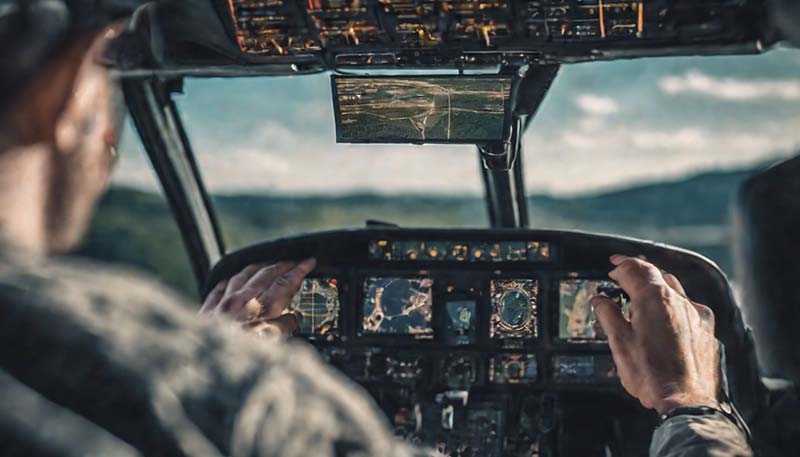Augmented Reality (AR) has been making waves in various industries, and the aviation sector is no exception. As a technology that overlays digital information onto the real world, AR offers a myriad of possibilities for enhancing pilot training and navigation. This article delves into the role of AR in these areas, exploring its current applications, potential benefits, and future prospects.
Introduction to Augmented Reality
Augmented Reality is a technology that integrates digital content into our everyday lives, overlaying virtual information onto the real world. By utilizing devices such as smartphones, tablets, and AR headsets, users can access an array of digital data that complements their physical surroundings. Unlike Virtual Reality (VR), which immerses users in a completely virtual environment, AR aims to enhance the real world with relevant and contextual information.
Pilot Training
Pilot training is a critical aspect of aviation, as it ensures that pilots possess the necessary skills and knowledge to safely and effectively operate aircraft. Traditional training methods often involve a combination of classroom instruction, flight simulations, and hands-on experience in the air. However, these methods can be time-consuming, expensive, and may not always accurately replicate real-world scenarios. Augmented Reality has the potential to revolutionize pilot training by providing an immersive and interactive learning experience that closely resembles real-life situations.
Advertisement
AR in Flight Simulations
AR can be integrated into flight simulators to create a more realistic and engaging training environment. By overlaying digital information onto the real world, AR can provide trainee pilots with real-time access to crucial data, such as flight instruments, navigational aids, and weather conditions. This added layer of information enables trainees to better understand the relationships between various elements in the flight environment and develop their situational awareness.
AR for Emergency Procedures
One of the most important aspects of pilot training is learning how to handle emergency situations. AR can play a significant role in this area by simulating various emergency scenarios, such as engine failures, in-flight fires, or instrument malfunctions. Trainee pilots can practice their response to these situations in a controlled environment, with AR providing visual cues and guidance on the appropriate procedures to follow.
AR for Maintenance and Inspection Training
Aircraft maintenance and inspection are crucial for ensuring flight safety. AR can be used to teach trainee pilots about the various components of an aircraft and their functions, as well as the proper procedures for inspecting and maintaining them. By overlaying digital information onto the physical aircraft, trainees can gain a deeper understanding of the systems and components involved, and learn to identify potential issues and perform necessary repairs.
Navigation and Flight Operations
Augmented Reality can also play a vital role in enhancing navigation and flight operations. By providing pilots with real-time access to relevant information, AR can improve situational awareness, reduce the likelihood of errors, and contribute to safer and more efficient flights.
AR for Enhanced Vision Systems
One of the most promising applications of AR in aviation is the development of Enhanced Vision Systems (EVS). These systems use AR technology to overlay critical flight data, such as terrain, runway information, and obstacle warnings, onto the pilot's view of the outside world. This added layer of information can help pilots navigate more effectively, particularly in low-visibility conditions or unfamiliar environments.
AR for Route Planning and Flight Management
AR can also be used to assist pilots in planning and managing their flights. By overlaying digital maps, waypoints, and other navigational aids onto the real world, pilots can more easily visualize their intended route and make adjustments as needed. Additionally, AR can provide real-time updates on weather conditions, traffic, and other factors that may impact the flight, allowing pilots to make more informed decisions and respond more quickly to changing circumstances.

AR for Crew Resource Management
Crew Resource Management (CRM) is a critical aspect of aviation safety, focusing on the effective use of all available resources, including the crew, aircraft systems, and support services. AR can contribute to improved CRM by providing crew members with access to shared situational awareness tools and communication platforms. This can help to reduce miscommunications, enhance coordination, and ultimately contribute to safer and more efficient flight operations.
Future Prospects
As Augmented Reality technology continues to advance, its role in pilot training and navigation is likely to expand. Future developments may include more sophisticated EVS, integration with Artificial Intelligence (AI) for predictive analytics and decision support, and the potential for fully immersive AR headsets that provide pilots with a seamless blend of real-world and digital information.
Furthermore, as the aviation industry moves towards more sustainable and autonomous flight operations, AR has the potential to play a key role in facilitating these transitions. By providing real-time access to relevant data and enhancing situational awareness, AR can contribute to more efficient and environmentally friendly flight paths, as well as support the integration of Unmanned Aerial Vehicles (UAVs) and other emerging technologies into the aviation ecosystem.
Conclusion
The role of Augmented Reality in pilot training and navigation is an exciting and rapidly evolving field. As AR technology continues to advance and become more widely adopted, it has the potential to significantly enhance the aviation industry by improving the quality of pilot training, increasing situational awareness, and contributing to safer and more efficient flight operations. By embracing the possibilities offered by AR, the aviation sector can continue to innovate and push the boundaries of what is possible, ultimately benefiting pilots, passengers, and the environment alike.